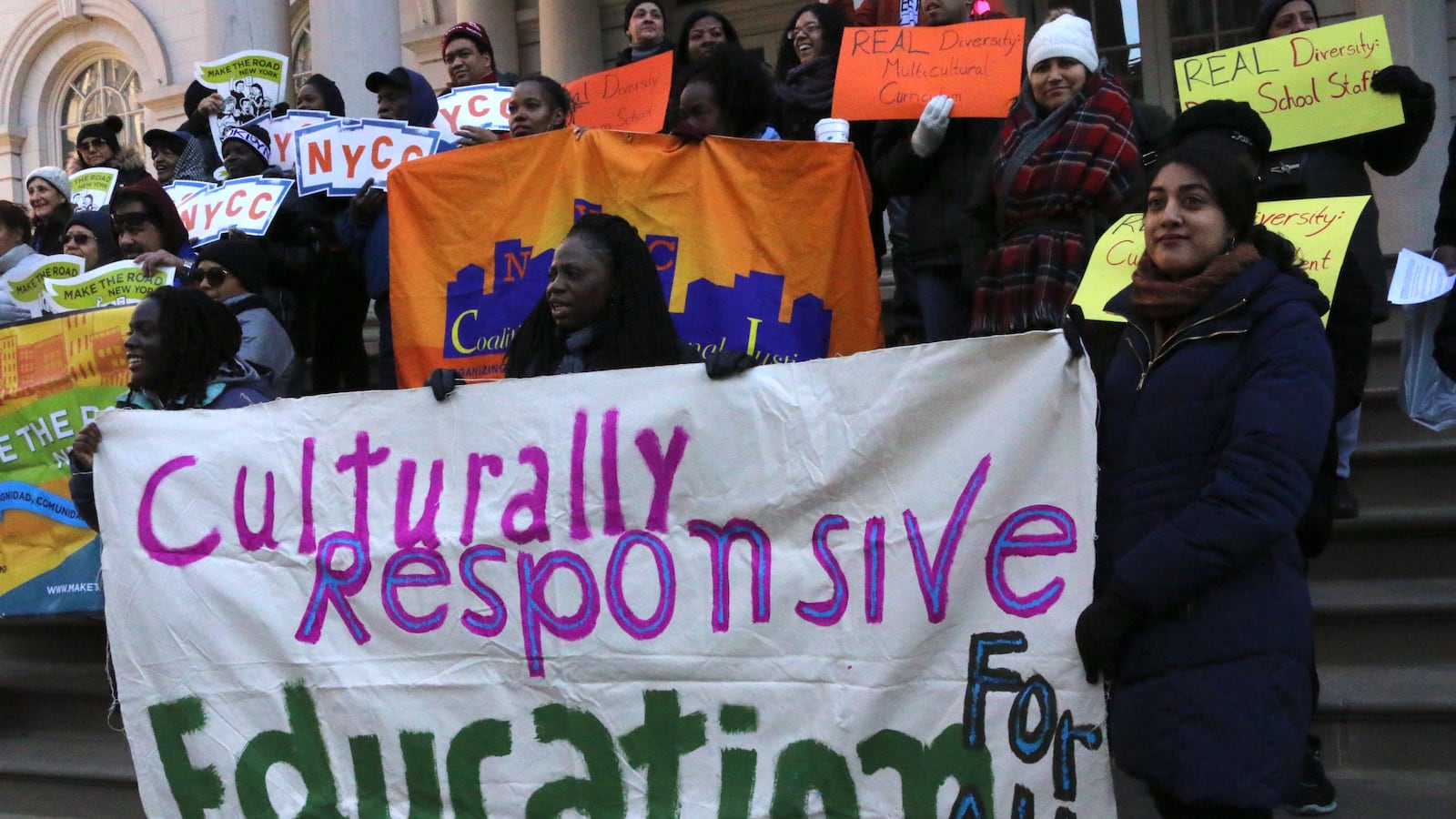After facing a drumbeat of criticism that the city’s schools often use materials that don’t reflect the experiences of students of color, education officials revealed plans Monday for implementing a more inclusive curriculum.
The education department said it will begin evaluating its core curriculum offerings based in part on whether they include materials that represent students of different backgrounds, so far as race, socioeconomics, sexual orientation, disability status, and other factors are concerned.
Department officials also announced a new fellowship program that will recruit 60 educators from existing schools to help devise more inclusive materials. For example, a spokesman said, the fellows could create a curriculum about the 1969 Stonewall uprising to teach students about the broader LGBT civil rights movement. Such a lesson could be taught alongside existing civil rights units.
The changes represent the latest effort from schools Chancellor Richard Carranza to address long-standing inequities that he says have plagued the nation’s largest school system.
“This is a big, important step forward,” said Natasha Capers, who directs the Coalition for Educational Justice, which has pushed for more inclusive curriculum. A report from her group found that 84% of books often used in elementary schools are written by white authors, even though the system’s student body is predominantly black and Hispanic.
The department also pledged to diversify the list of books that are recommended in school libraries for independent reading. To do so, they will draw on input from parents, students, and teachers. The current selection is disproportionately skewed toward white authors.
Under the city’s recently adopted definition of culturally responsive education, public schools have an obligation to “interrupt policies and practices that center historically advantaged social/cultural groups and lead to predictable outcomes of success or failure for historically marginalized students.”
Carranza’s critics have railed against certain elements of that definition and the chancellor’s initiatives meant to redress inequity, including mandatory implicit bias training for the vast majority of education department employees. Some detractors have argued that the focus on racial and socioeconomic gaps distracts from more urgent work to improve classroom instruction.
Pointing to research, department officials insist that deploying more inclusive curriculum will benefit students who have often found themselves absent in their school’s framing of history, science, and civics.
Still, it is unclear how sweeping the curriculum changes will be and how quickly they will make their way into classrooms. Officials will not guarantee that a certain proportion of the core curriculum will be culturally responsive — only that it will be one of the criteria they use to determine a particular curriculum’s merit.
And while most schools use a version of the core curriculum offered by the department, officials said it may take years for those materials to be retired and for new ones to trickle down to a critical mass of schools. Some schools don’t use the core curriculum offerings at all, and the department has no plans to mandate they do so.
“Although the chancellor boldly announced that all new curriculum will be aligned to [culturally responsive education],” Capers said, “it would be nice to know when they’ll be in teachers’ hands.”
Also on Monday, the department announced that schools must assemble “instructional leadership teams,” composed of teachers and administrators. These groups will develop a broader road map for improving instruction at their schools, with an eye toward culturally responsive curriculum.
Those teams will be charged with making sure teachers in different classrooms are on the same page, so that a third-grade teacher’s approach is aligned with that of a fourth-grade teacher at the same school. They will also be tasked with helping to make sure that schools have a strong focus on literacy. Additionally, they are supposed to make sure that students with disabilities and those learning English have as much access to the curriculum as possible without being pulled out of their classrooms for separate interventions.
The idea is to help “every school determine a coherent approach to their curriculum,” Linda Chen, the department’s Chief Academic Officer, told reporters. “A lot that work is not brand new.”
Mark Cannizzaro, the head of the city’s principal union, said he was puzzled by the city’s decision to order schools to create new instructional teams, arguing that it will largely duplicate work that is already happening and add yet another layer of mandates.
“There are more frameworks and plans than any one person could pay attention to,” Cannizzaro said. “Something has got to give.”
Carranza emphasized that this particular mandate is supposed to make principals’ lives easier.
“Everything has a name but it’s all part of one family,” he said. “Principals are actually going to have less that they have to do.”

